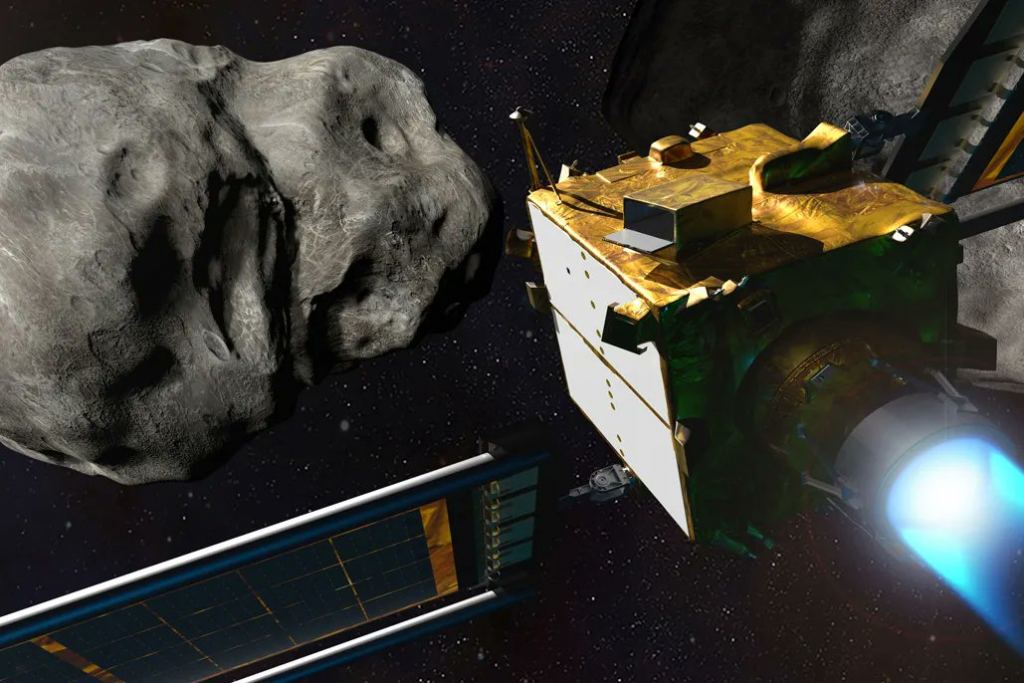Gravity calculations can provide plenty of insight into a variety of phenomena. Everything from Einstein rings to the rocket equation is at least partially dependent on gravity. Now an undergraduate student and professor team from MIT think they have a new use for gravity calculations – understanding the interior density of asteroids.
The research stemmed from a class offered at MIT known as “Essentials of Planetary Science,” which, like all good classes of a similar vein, focused at least in part on the formation of objects in the solar system. It also had a semester-capping final project, which is so well-known to many college students. In this case, one of the undergraduates in the class, Jack Dinsmore, who is now a graduate student at Stanford, wanted to answer a simple question with his final project – does an asteroid do anything when it simply passes by Earth? After some preliminary modeling based on other equations taught in the Planetary Science class, it turns out the answer is yes.
This isn’t the first time astronomers have thought to study asteroid rotation. Credit – djxatlanta YouTube Channel Details about the project caught the attention of Julien de Wit, the Professor of Planetary Science that was teaching the class. To complete his project, Dinsmore wrote code to model what happened to an asteroid’s orbital and spin dynamics as it passed near Earth.
According to his calculations, that was mainly determined by the asteroid’s shape, size, and, most importantly, density. Density is critical in these calculations because it can help determine what asteroids are made of. Partly that would be interesting to potential asteroid miners.
But more importantly, it is also useful to know if you want to deflect one. NASA recently did so successfully with the DART mission. However, many asteroids are “rubble piles” – essentially a bunch of rocks loosely held together via gravity.
If you smack a probe into one of those, it certainly won’t make as much of an orbital change as it would if you hit a section made of solid metal. UT video on asteroid mitigation technologies. So, where you hit an asteroid and how dense it is over its surface can significantly impact the effectiveness of any potential redirect missions.
There are some asteroids where this information could be incredibly useful – such as Apophis, which, while not causing an immediate threat to the Earth, is undoubtedly one in the medium to long term. Apophis will also prove an excellent test of the theory of whether this modeling system will work to predict the shape and density of asteroids. It will have a close encounter with Earth in 2029, and Dinsmore and de Wit hope that interested astronomers, both amateur and professional, will collect enough data on it that they can compare it to additional simulations they have developed for a wide variety of sizes, shapes, and densities of asteroids.
That type of modeling is common enough in other fields – where scientists develop a series of models based on varying different quantities and determine which is the best fit for data collected on an actual object. With that feedback, researchers should be able to tease out what the interior of any asteroid in a close encounter with Earth would be. All the more reason to keep an eye on any near-Earth asteroids that might be of interest.
Learn More:MIT – Method for decoding asteroid interiors could help aim asteroid-deflecting missionsDinsmore & de Wit – Constraining the Interiors of Asteroids Through Close EncountersUT – Astronomers Look “Inside” an Asteroid for the First TimeUT – An Upcoming Asteroid Mission Will be Able to Peer 100 Meters Under the Surface Lead Image:Artist’s depiction of the recently completed DART mission to redirect an asteroid. Credit – NASA / John Hopkins APL The post When an Asteroid Gets Close to Earth, we get a Rare Opportunity to Learn What it’s Made of appeared first on Universe Today. .
From: universetoday
URL: https://www.universetoday.com/158462/when-an-asteroid-gets-close-to-earth-we-get-a-rare-opportunity-to-learn-what-its-made-of/



